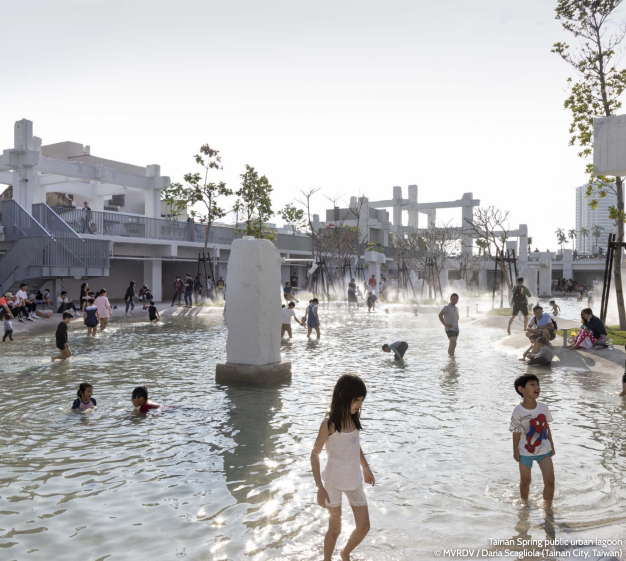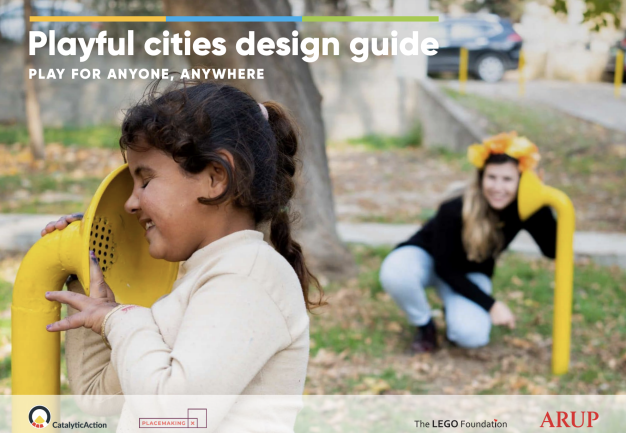
Playful Cities Design Guide – how play can transform cities
‘Practical and inspirational’ ideas for policymakers are at the heart of the Playful Cities Design Guide.
The guide is a collaboration between architects Arup, urban leadership network PlacemakersX, charities CatalyticAction and the LEGO Foundation, and the Ingka Group.
The aim is to help city leaders, designers and policymakers to ‘imagine and embed’ small-scale play elements fit for children, youth and adults.
Arup, which is is vastly experienced in delivering child-friendly architectural projects, published this latest resource, exploring what it calls ‘the spatial dimensions of play’, and how diverse urban spaces can can enable play for everyone, wherever they are.

“Play includes a wide variety of activities which can be unpredictable, spontaneous, irrational, and risky, and which are often unanticipated by urban practitioners, policymakers, and other users,” says the guide.
By illustrating the forms that play may take in cities, this guide reveals people’s creativity, curiosity, imagination, movement, interactions, learning and emotions in using urban space.
The guide, it goes on to say, contains various examples of play and practical ideas that can be adapted and used in ‘different design processes and socio-cultural contexts to trigger and support play as a crucial element of our everyday life.”
It focuses on three key questions: 1) Where can we add play in our cities, and what kinds of spatial elements can support playful experiences? 2) How can we design for play that is inclusive of different age groups, abilities, and identities? 3) How can play help us to develop a diverse range of skills, as well as to connect to our urban and natural environment?
“By illustrating the forms that play may take in cities, this guide reveals people’s creativity, curiosity, imagination, movement, interactions, learning and emotions in using urban space,” it adds.
Click here to download the guide.
It follows Arup’s recent involvement in the creation of the Proximity of Care Design guide, which concentrates on challenges like climate change, air pollution and access to key services.
A partnership of children’s champions, including Arup and the Bernard van Leer Foundation, published the guide with the aim of showing what works in one place can, with some adjustments, work in multiple settings.




